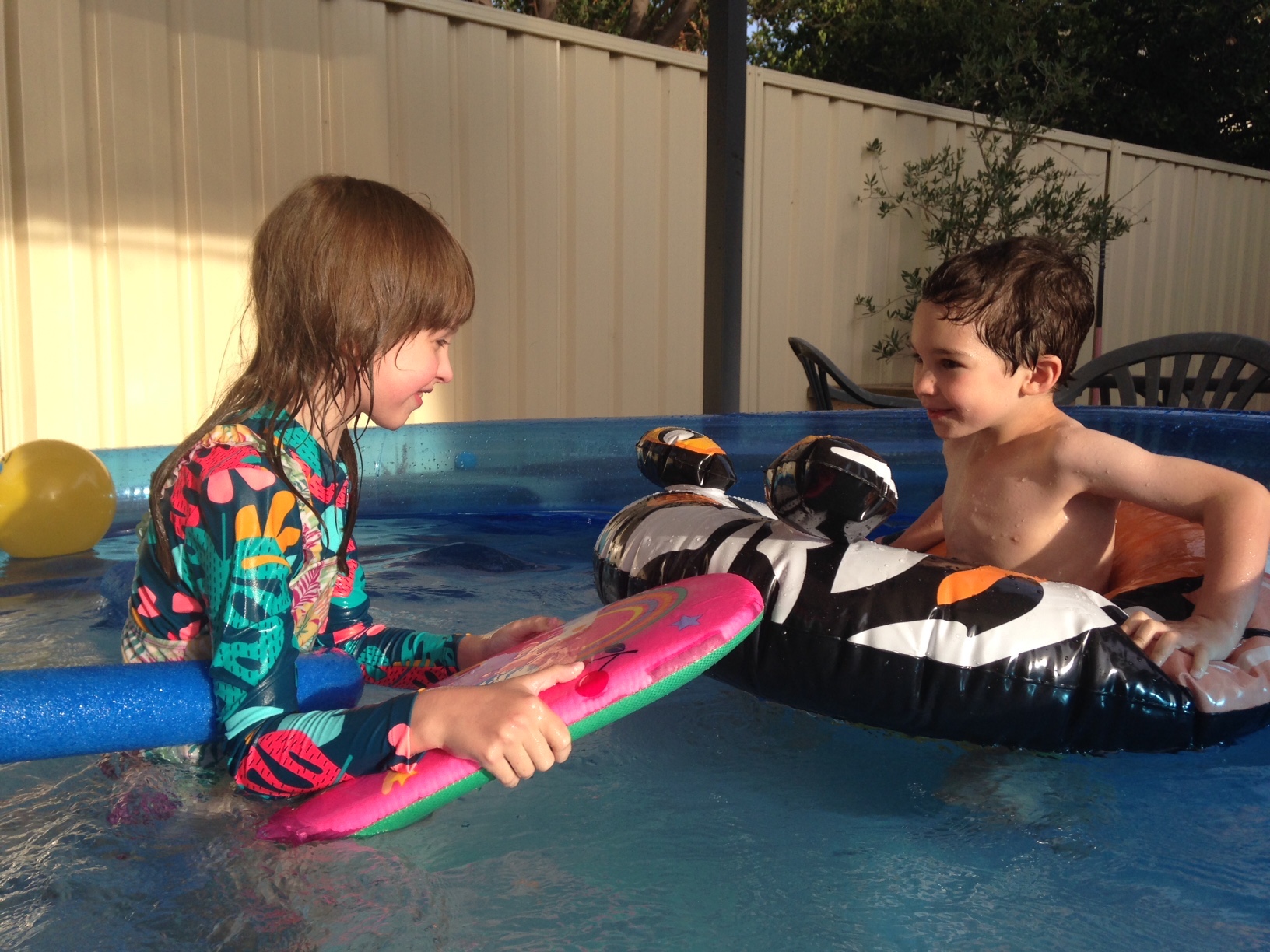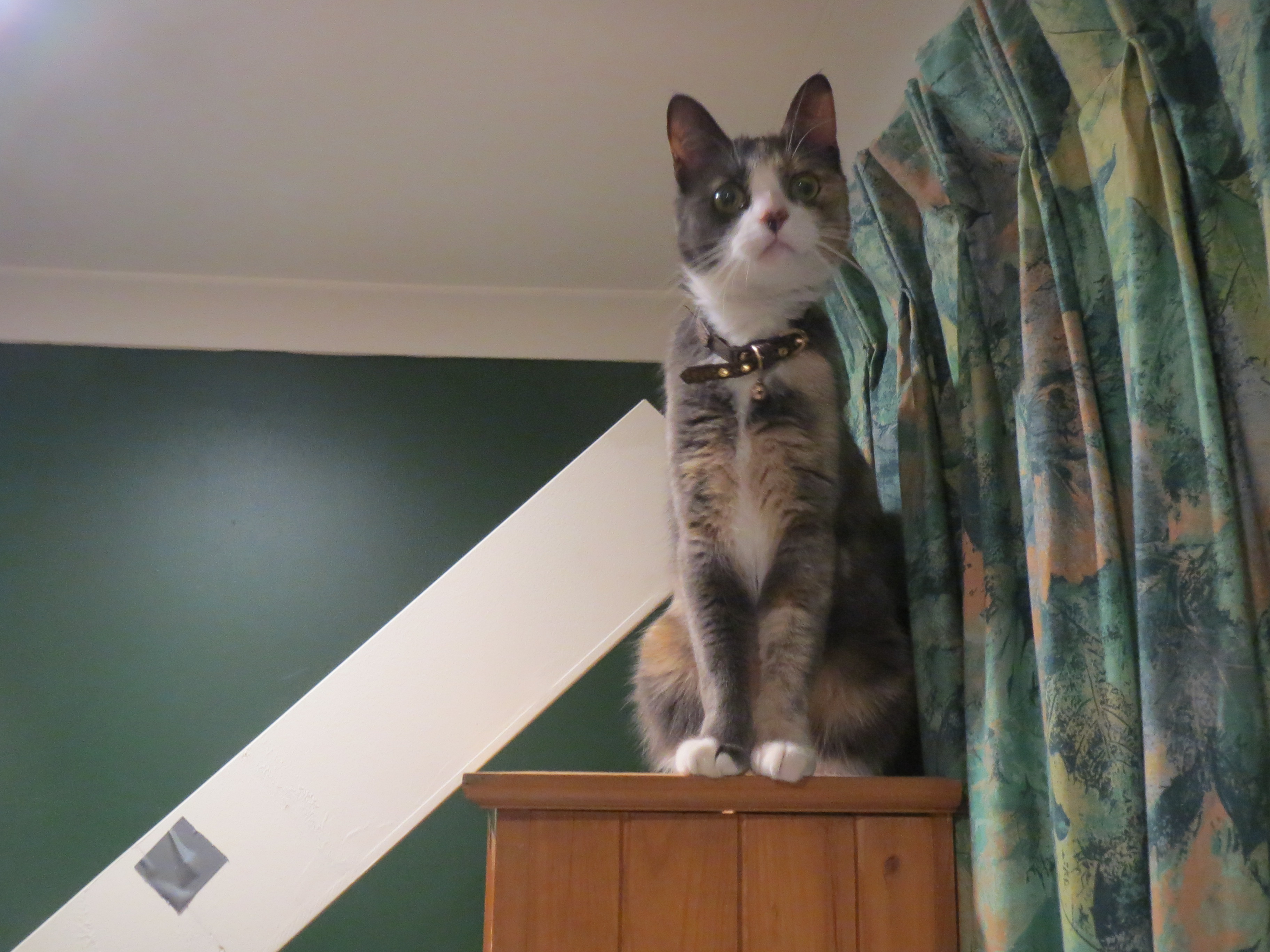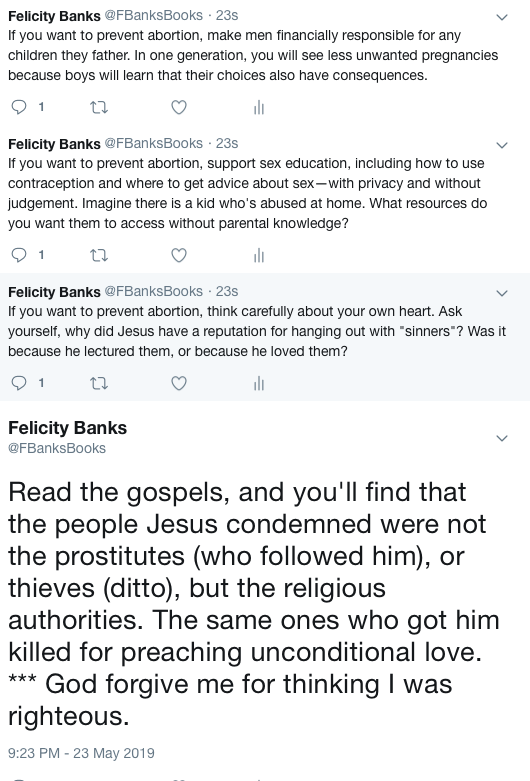Colour Taste Texture: An Autistic Cook Book
My daughter is autistic and has a number of unusuakodd behaviours in relation to food. For example, we went to the zoo (she loves animals) and when I asked her the best part of the day she said it was the Chocolate Caramel Slice (just what a parent wants to hear after spending so, so much money). She is obsessed with junk food! But she frequently skips meals because she’s “not hungry”—and that includes meals that are simply us parents begging her to eat a sugary treat (like chocolate caramel slice) rather than nothing at all.
When she does eat, there is an extremely small range of acceptable dishes. We are constantly perusing recipe books to find more foods that she is willing to taste (often even a bite is too much to ask). And she loves recipe books, too! She brings them home from the school library all the time. Of course it’s mostly about the treats, but there’s usually one non-dessert item that she’s at least hypothetically willing to try. Having said that, I’ll often choose and cook something with her input and assistance only to have her change her mind at the end of the process and still refuse to try it.
[Memo to self: WHY does she get full so quickly? Investigate. Maybe it’s some kind of medical thing.]
Every so often, though, we have a real victory. For example, she has been eating a stick of celery almost every day for the last two years. It has to be slathered in peanut butter (smooth not crunchy) and choc chips, but she eats it. This is a HUGE deal. It’s currently her only acceptable green vegetable and if she required it to be deep-fried and served with ice cream we would do that. (She also takes iron and vitamin C tablets, because she would otherwise be literally malnourished due to her many food aversions and her general lack of appetite.)
Celery (and food therapy) was also key to my understanding that a crunchy texture is something that Lizzie really enjoys. (Which was quite a revelation, since I dislike almost all crunchy foods myself.) Today I made her cucumber sandwiches, and even though she ate only three bites before getting full, she said she liked it! (Then Chris and I finished them, and they were so good I made another just for myself.)
Sidebar: Cucumber sandwich recipe
Thinly slice some cucumber, and thickly butter two slices of white bread. Lay out the cucumber slices on the chopping board and press a paper towel on them to absorb the moisture (otherwise they’ll immediately go soggy, plus make your bread soggy). Spread mayo on the lower slice of bread, then arrange the cucumber in a single thin layer and sprinkle it with salt. Cut off the crusts and serve in triangles immediately (or it’ll get soggy). Watch the film “The Importance of Being Ernest” as you eat them for extra flavour.
So that was a win today!
As soon as I heard this book might be helpful for autistic kids, I wanted it.

It literally has chapters on colours, tastes (sweet, bitter, salty, etc), and textures—what autistic people tend to like and dislike, and how to modify dishes based on those criterion!
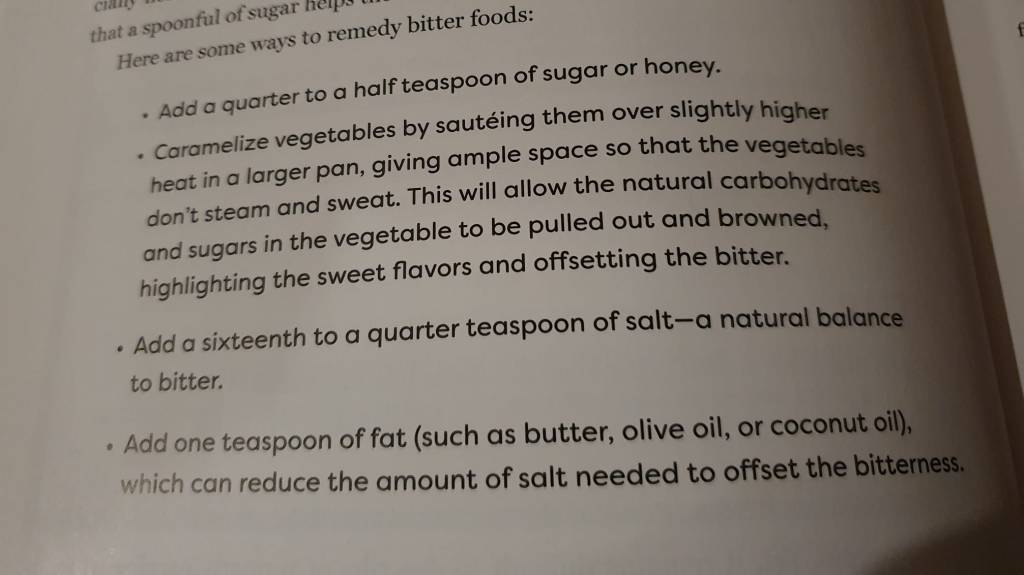
Autistic people don’t “hate vegetables”… they probably hate bitter tastes, or that farty smell (looking at you, cabbages), or crunchy foods (hello salad), or foods mixed together (again with the salad). If you can figure out WHY they love or hate a food, you might be able to expand their list of safe foods by changing the texture, colour, or environment. Incredible!
The author is autistic, which gives them excellent insights as well as some blind spots (eg his editor pointed out that in the colour section he had completely left out green, a colour to which he is so averse he forgot it existed). He clearly loves bread, and recipes with yummy dairy in them (buttermilk, cream cheese, butter) as there are loads of those.
The book isn’t written with a kid audience in mind, so although I started reading it aloud to Lizzie we quickly decided it was best for me to read it and for her to look at the recipes and pick which ones were best for her (interestingly, not every recipe had a picture with it, which was frustrating for her).
The author also uses cooking spray to stop things like dough sticking to other things, which to me is nothing short of a slap in the fact to autistic people in general and me in particular. Doesn’t he know that cooking spray has a horrible bitter taste that ruins almost everything it touches? And he says to use it on SWEET dishes? IS HE EVEN AUTISTIC??
Ahem.
My daughter likes sweet things, salty things, crunchy things, smooth things, and soft things. She always wants to eat while watching YouTube because that is soothing to her. Understanding these things is key to offering her food she is more likely to eat (it is extremely difficult to get her to eat much at all).
She jumped on the French Fry recipe and I managed to not tell her that it’s extremely similar to the way I roast potatoes almost every day (a safe and delicious food for me). I adjusted it a bit—cutting out pepper (which a lot of spicy-averse people like her also hate) and adding basil and garlic (both sweet flavours) instead. She liked them, and so did every other member of the family. They need to cook for 30-40 minutes, but they’re not super difficult. Given that Lizzie doesn’t even eat potatoes (I KNOW, weird) this is a win! Potatoes are actually a really great food with lots of fibre and other goodies. And I can easily cook her some fries every time I cook roast potatoes (so, about five times a week). Three baked potato chips a few times a week is actually a great improvement in her diet. Here’s how they looked:
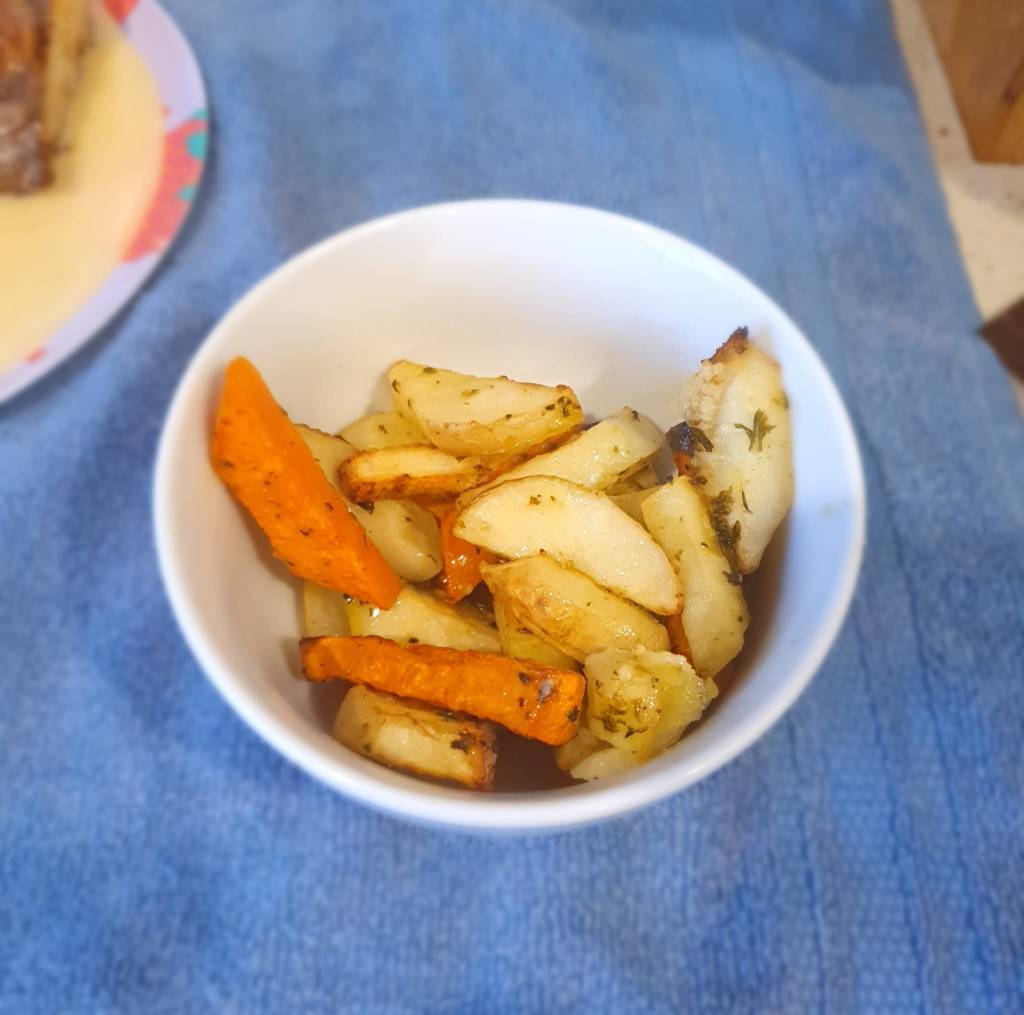
I’m in the (long) process of cooking cinnamon rolls right now. They’re rather finicky (eg including fresh orange juice) but clearly they’re also the author’s absolute favourite recipe, honed over many years, so I have to try them at least once!
The author likes specific cooking tools like a dough hook (okay, what is that?) and meat thermometer (ooh, I could do with one of those), and uses Fahrenheit (ugh… why YES I already boiled some bread dough today) but their insights are so incredibly valuable. It’s definitely worth scribbling all over the book as I figure out what works for us and what doesn’t.
I haven’t seen anything like it before.
Pic of the finished cinnamon rolls:

They. Were. Incredible.
The edges were crispily delicious, and the middle was a crumpet-esque land of chewy bread perfectly intermingled with air pockets thanks to the author’s beloved tangzhong (aka roux) method).
I made the icing, which was great (and mercifully simple) but honestly there was way too much. I think the tiniest little bit of icing would be best, so the buns can shine. I also think this icing would take lemon or other flavours really well. Orange would be the perfect thing for these, since they already have a tiny bit of orange in them.
The icing also ruins the look, but perhaps a perfect swirl of icing along the line of the bun would work really well.
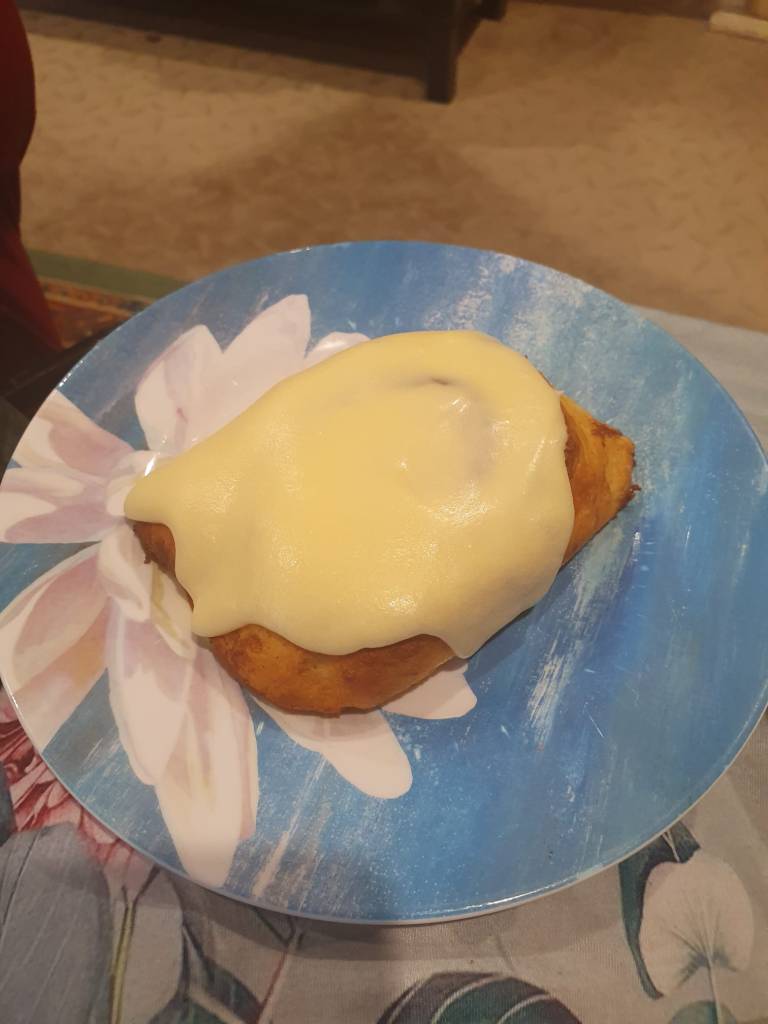
Now I’m all excited and I’m looking through the book with newly trusting eyes, thinking, “What other wonders lie in these pretty pages?
I normally get one let’s-give-it-a-go savoury recipe per book, and a few sweet ones that sound good. This book is batting waaay above average.
Of course, I adore bread too.
Adventures in Community Sponsorship of Refugees
[Media Release]

Afghan refugee Sara Tahiri, her Australian-born cousin Jamila Amir, and honorary Castle of Kindness Refugee Sponsorship Group member Lizzie Banks.
On the 7th of June this year, Musa and Amina Tahiri* were told they and their four children would be moving to Australia in fifteen days. Musa and Amina are Afghans who lived as refugees in Iran for thirty years before the Australian government’s Community Refugee Integration and Settlement Pilot (CRISP) opened the door to a new life.
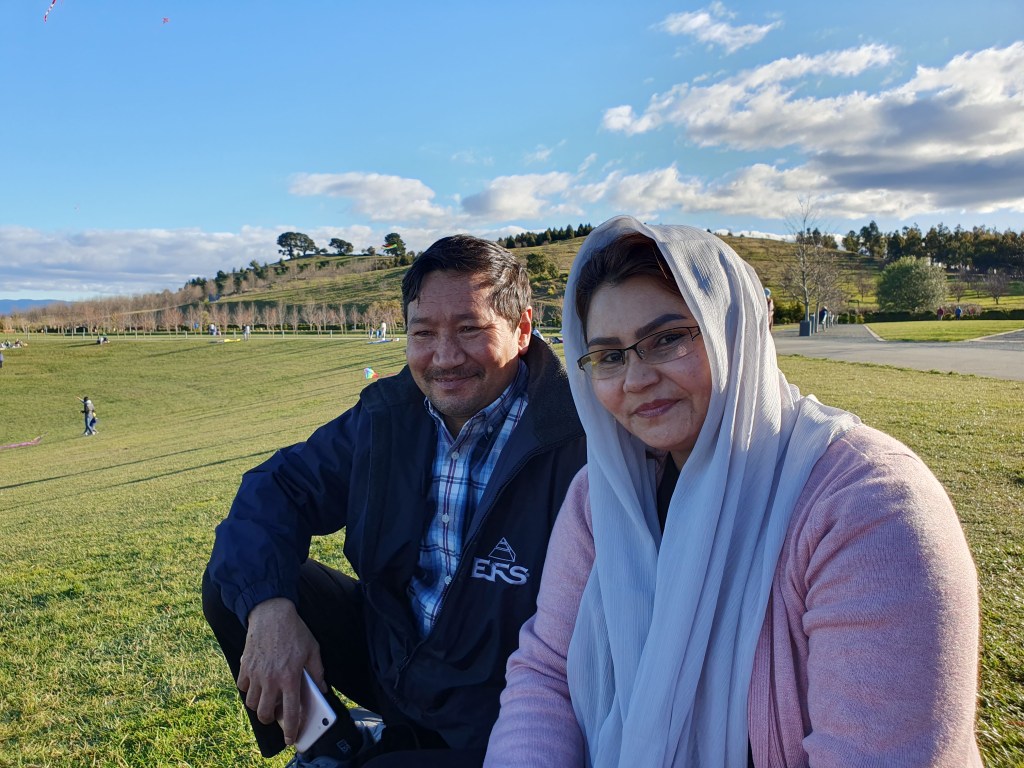
Musa and Amina Tahiri.
When they arrived in Australia on June 22nd, mother of two Felicity Banks met them at the airport with snacks, water, and a ball for two year-old Sara to play with. Along with other members of the Castle of Kindness Refugee Sponsorship Group, she accompanied them to a house in Canberra. It was prepared for them with furniture, linen, and seasonal clothing donated by the wider Canberra community. There was halal food in the fridge, colourful art on the walls, and a freshly-made Afghan meal for them to eat.
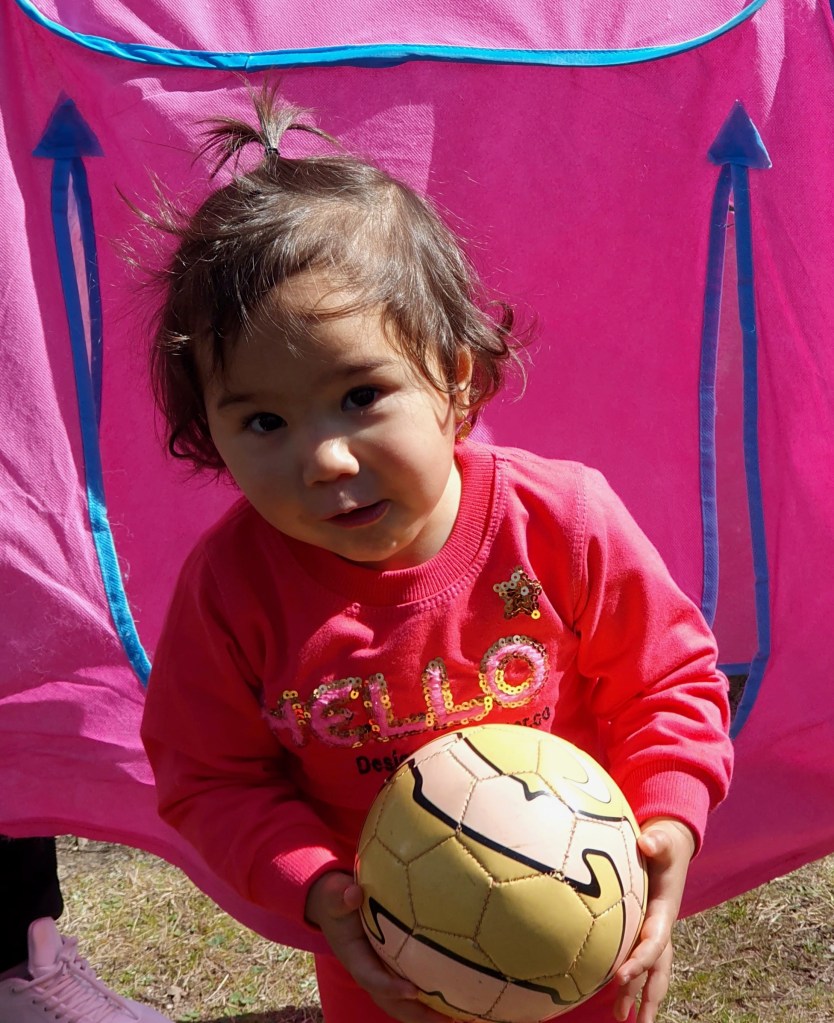
Sara Tahiri.
A few days later, a member of the Castle of Kindness was showing the Tahiri family how to walk to their local Aldi while Canberra’s winter wind whipped sleet into their faces, and was astonished when eighteen year-old Ahmad used Google Translate to tell her, “I think this is like Paradise.”

Sara Tahiri with Lizzie Banks at the National Arboretum.
The Castle of Kindness Refugee Sponsorship Group is made up of a mix of Canberrans, some of whom had not met before forming the group. Each person brings their own skills, connections, and personality to the table. Felicity Banks is the coordinator. She says, “None of our group members speak Farsi, and it’s often difficult to communicate. But the fact that I speak English means I already have a skill that refugees need. We also have access to free translation services, and the local Afghan and Iranian communities. One Canberra woman grew up in the same Afghan town as Amina—and now their youngest daughters go to the same playgroup.”
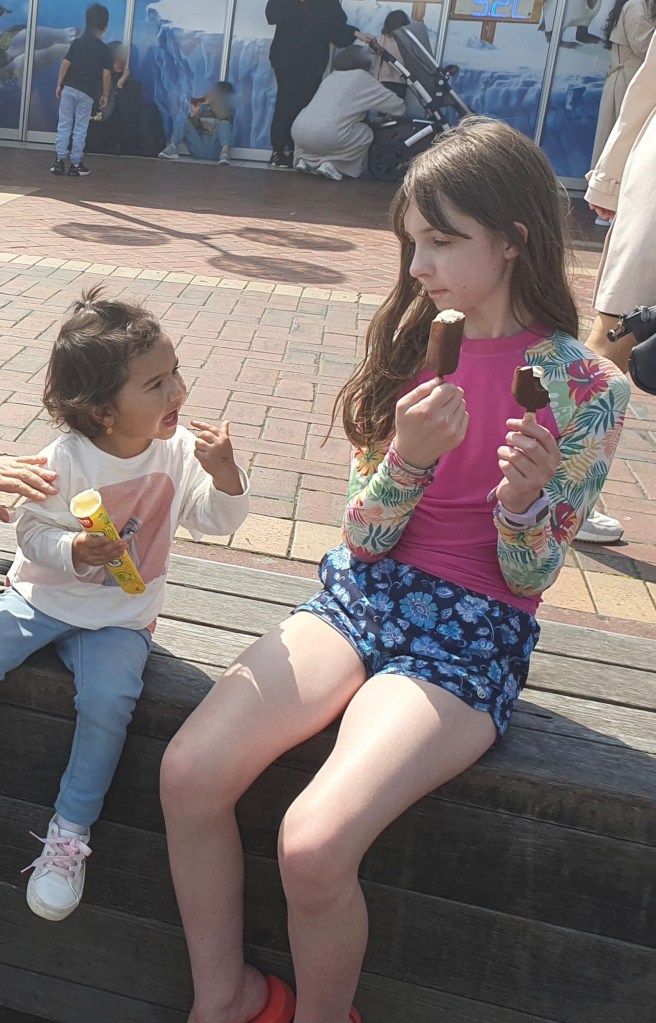
Sara Tahiri communicating eloquently with Lizzie Banks.
The Castle of Kindness Refugee Sponsorship Group has shown the Tahiri family around their new neighbourhood, accompanied them to health care appointments, taught them how to catch buses, and connected them to English lessons, local small businesses, and more. “People think Canberra is soulless and unfriendly,” says Felicity, “but it’s simply not true. The wider community has welcomed the Tahiris with gifts, practical help, kindness, and friendship. There are groups like ours forming all around Australia. Most Australians already know that refugees deserve a chance to thrive.”

Amina and Sara Tahiri with Leslie, another member of the Castle of Kindness, the day they moved into long-term rental accommodation chosen by the Tahiris.
One day, when the Tahiris were preparing to walk home from Felicity’s house, little Sara confidently told her family, “You go home. I’ll come later.” She is a bright, defiant, affectionate and confident girl that Felicity calls “Little Miss Pterodactyl” because she loves to scream for joy. “When I imagine this strong-willed and clever girl growing up as a stateless woman in Iran, I shiver,” says Felicity. “Amina sleeps better now that she lives in Australia, because her children are safe. She has also just started a new job.”

Sara playing with Lizzie’s hair
The Albanese government recently announced that they would increase Australia’s Refugee and Humanitarian Intake to 20,000 per year, which is welcome news to refugee advocates. Minister for Immigration, Citizenship and Multicultural Affairs Andrew Giles also says, “The Government is committed to ensuring that Australia steps up and plays its part in addressing the global humanitarian crisis, including by increasing community sponsored and other complementary places gradually to 10,000 over time and making this additional to our humanitarian intake.”

Amina and Sara Tahiri in Tidbinbilla Nature Reserve
On the other hand, Iran alone is currently hosting over 750,000 registered refugees, most of whom are Afghans. Felicity says, “I can’t provide a home for every refugee in the world, or even every refugee in Iran. But to Sara and her family, the world has changed completely because of one small group of Canberrans. They’ve changed my world for the better too.”

Felicity and Sara at Bondi Beach (photo by Amina).
The Tahiri family loves to see cockatoos, gum trees, and kangaroos around Canberra. When the Castle of Kindness found out the Tahiris had close relatives in Sydney and had never seen the ocean, group member Christine O’Callaghan joined Felicity and her whole family in taking the Tahiris on a holiday to Sydney—including a trip to the beach with their cousins the Amirs. “Because we’re a community group, we can choose to do things just for fun,” says Felicity. “My heart was filled with joy to see the Tahiris connecting with their Australian-born cousins. And Mrs Amir invited all twelve of us to her home where she filled our stomachs with delicious Afghan food.”
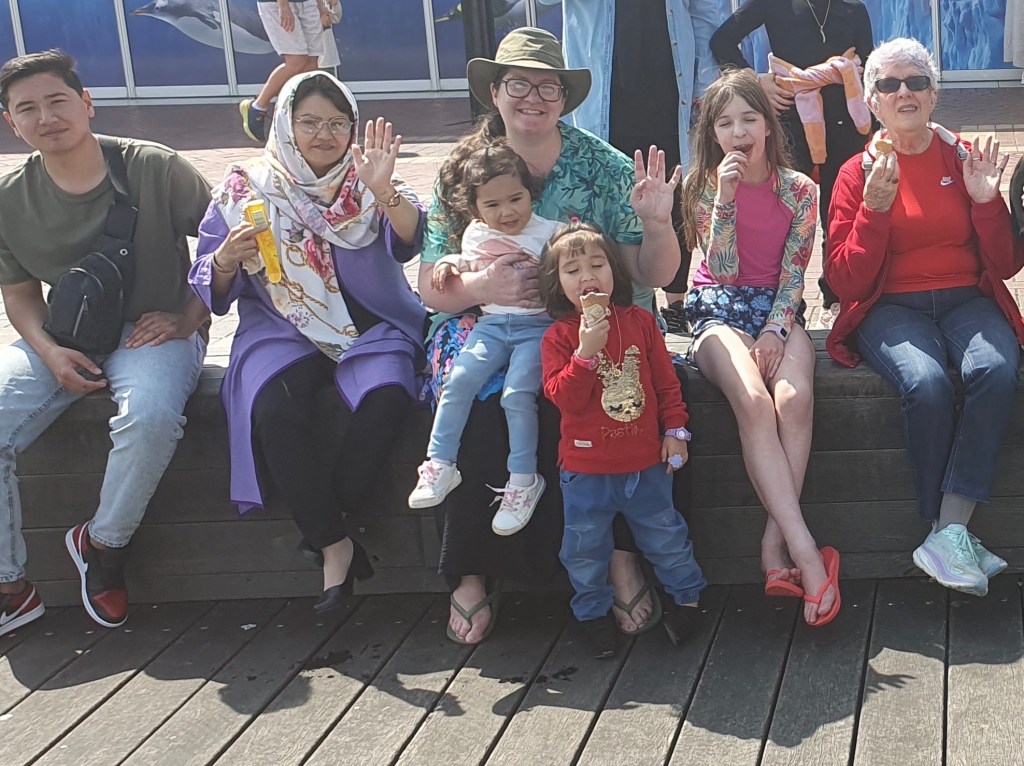
Hassan Tahiri, Amina Tahiri, Felicity Banks, Sara Tahiri, Gisoo Amir, Lizzie Banks, and Christine O’Callaghan eating ice creams.
CRISP groups like the Castle of Kindness holistically support one refugee person or family at a time for their first twelve months in Australia.

Jamila Amir, Mrs Amir, Gisoo Amir, Amina Tahiri, Sara Tahiri, and Lizzie Banks at Bondi Beach.
The Castle of Kindness Refugee Sponsorship Group receives no government funding. They are running an Open Garden Fundraiser on Saturday 11 November from 10:00am-4:00pm at 15 Cockerill Pl McKellar including a plant stall, live music, home-made baked goods, contests for kids and adults, a talk by horticultural expert Bryn Hutchison at 11:30am, and a talk by Felicity Banks about refugee sponsorship at 1:30pm. There is also a Posy-Making workshop at 3:00pm. Their GoFundMe is here.
Their web site is here, and Felicity can be contacted directly at CastleOfKindness@gmail.com
For more information about the government’s Community Refugee Integration and Settlement Pilot, click here. Or here for an update from the office of the Hon Andrew Giles MP.
*names have been changed
Refugee Sponsorship Diaries
I wrote last entry about the Community Refugee Sponsorship Initiative, which is all about having a small group of people look after all the needs of a refugee or refugee family for their first 12 months in Australia (everything from English lessons to introducing Vegemite to helping them look for work and settle their kids into school).
This is so very much what I want to do, and it doesn’t hurt that I speak (extremely rusty) Indonesian.
The CRSI has a kind of pilot program (they call it ‘mentoring’ to distinguish it from full-on ‘sponsorship’) beginning this October, which runs for just 6 months, costs much less, and assists refugees who are either already in Australia or already approved to come here (so they’re probably skilled migrants).
I am deliriously excited about all of this, and I’m a massive over-sharer, so (within ethical boundaries) I’ve decided to blog about the experience.
I am a disabled and mentally ill bisexual Christian woman with two kids, two cats, and one husband. I’m an author of fantasy novels and interactive novels. For 12 years I prepared to be an aid worker (specifically a teacher) in Indonesia, visiting various provinces a total of seven times.
So far I’ve gathered a group of seven core sponsorship individuals. We’ll all be trained (via CRSI) and we’ve all submitted current police checks and Working With Vulnerable People cards. I compiled and submitted a form with all our personal details plus relevant skills. The group includes Chris and I, my mum (who’s acting as treasurer), two of my mum’s friends from her church, one friend from my church, and a man that none of us have met before who is studying refugee resettlement. We’re all facebook friends now, and there’s also a wider group that is following along with the mentorship via a facebook group (including many people that do want to meet and help the refugees but don’t want to be part of the official core group).
COVID of course will limit what we can do, and my own chronic illness (including being immunocompromised) is always limiting. I am way more functional if I’m in my (temperature-controlled) house, so I’m hoping we will be able to settle the refugees very close by, so they can easily come over (and hopefully go to the same school as our kids). We’ve been given a car (!) so we’ll teach them to drive if they can’t already.
I’ve raised about $5000 in Phase 1 of my fundraising plans, which fundamentally involved asking almost everyone I know for $100. (Phase 2 is a facebook fundraiser, Phase 3 is a GoFundMe, and Phase 4 is a Gift Shop made up of donated items for people to buy.) That is way more than we need for the mentor phase, but for the full program we need to have a bit over $42,000 in a trust before we can get started. That’s… a lot. Most of the core group is teachers, retirees, and… me. None of us earn much, so my mind will be full of fundraising for a long time to come. The up side is that, if the trust doesn’t get used up by one family it can be rolled over to the next refugee family. It’s still a lot, though—and that’s not counting things like setting up house and paying for airfares to Australia. (Setting up house is something that will be enormously fun and will cost very little as three of us are connected to Buy Nothing groups that are absolutely fantastic for toys, clothes, and furniture.)
CRSI will be in contact by 10 September, and I don’t know if that will be to set up our training or to tell us a little about the person/family we’re matched to, or both. I’m of course terrified that we won’t be matched to anyone and will have to cool our heels for months to come. But I think, rationally speaking, that we’re sure to be matched with someone… and I can’t wait to find out a little bit about them.
This is something I want to do for the rest of my life.
Racism Island
Buckle up.
Graph 2: Child Mortality Rates, from the ABS and AIHW analysis of National Mortality Database via https://www.niaa.gov.au/sites/default/files/publications/indigenous/hpf-2017/tier1/120.html
Graph 3: And the rate of maternal death in child birth, which is chilling for anyone with a mother. From the Australian Institute for Health and Welfare at https://www.aihw.gov.au/reports/mothers-babies/maternal-deaths-in-australia-2012-2014/contents/risk-factors-for-maternal-death
It hurts to look at these graphs, but I bet it hurts a whole lot more to be an Aboriginal or Torres Strait Islander living in a stolen land, recovering from a Stolen Generation, and knowing your future and your children’s future is also in mortal danger of being stolen without any chance of justice. (Shout out to all people of colour in Australia and beyond, but focusing on Aboriginal and Torres Strait Islanders today.)
People call Australia ‘Racism Island’ and they’re not wrong. We are no better than the US. And we’d better fight just as hard to make things better.
The Virus Diaries: The Kids are Better than All Right
My kids are 5 and 8. It’s TJ’s first year of school; a moment that I have looked forward to with GREAT excitement for many years. He’s done plenty of day care and preschool, but Kindy is different. Apart from anything else, his education is finally in sync with Louisette’s.
But.
It’s kind of nice, to once more be the world expert on my kids. I mean, I was still the expert when they went to school but there was a huge chunk of every weekday I didn’t see or even know about. Because of COVID-19, I am once more the absolute centre of their world. Even when I’m not actively doing anything and/or when Chris is taking charge of everything kid-related, I can hear them and I know what’s going on in their lives every hour of every day.
I saw TJ’s face as his first tooth fell out.
I planted potatoes with Louisette.
I finally read one of my own books to TJ, and he loved it.
I’ve gotten back into reading with Louisette.
I’m almost as good as TJ on MarioKart.
Louisette is getting good at her times tables because of me.
Never forget that the reason your kids misbehave so much is that they know you’ll still love them no matter what they do.
This is the first generation in a long time to spend so much time with their primary caregiver/s after they reached school age. Years from now, the kids—mine and yours—won’t remember COVID-19 the way we do. They will remember wearing their PJs for weeks at a time, and sleeping in every day, and never having to rush to get to school. They’ll remember the time you got sick of education and watched a movie with them instead, and the time you burned popcorn together and stunk out the entire house. They’ll remember countless hours spent becoming a genuinely skilled athlete thanks to your cheap plastic basketball hoop, and jumping every day on the trampoline that they’d forgotten existed. They’ll remember eating wraps for lunch instead of regular bread, and drinking juice instead of milk—we’ll know it was because we couldn’t find the groceries we needed, but they’ll just remember how fun it was—and they’ll forget the day they screamed because there was only half a fish fillet in their dinner instead of a whole one. They’ll remember lying in the sun at lunchtime with you, talking about nothing because for once you had nothing better to do and no one more interesting to talk to. They’ll remember how you coloured in next to them, and the day you whispered that you can never remember your eight times tables either. They’ll remember being with you, day in and day out; being at the centre of your world and knowing they’re surrounded every second by the ones who love them the most. They’ll carry that feeling of love and connection for the rest of their lives.
Kids who experienced 2020 will be kinder than other kids. They’ll know to check on the elderly and the chronically ill, and will consider it a normal part of everyday life. They’ll always smile at strangers, and will never hesitate to help someone in trouble. They will never take hugs for granted. They will always know that they are loved at their worst, no matter what, and at the same time they’ll know that their parents are sometimes scared or tired, and sometimes not even very good at being parents. They will reflect our own exhausted 2020-style love back to us when we’re too old to care for ourselves, and in those future days they’ll be the ones putting up with our eccentric clothing styles and constant whinging for treats.
They’ll know that no amount of money or possessions can stop a person depending on other people to get through the hard times, and they’ll live in a serene faith that when the chips are down, all of humanity can cooperate, and all of humanity actually does a pretty good job of looking after each other. They’ll know that even the most vile and selfish politicians eventually do the right thing because there are enough good and clever people in the world to sway the balance of public opinion towards facts and scientific truth. They’ll be more empathetic and flexible than other generations, and more connected to the global community. They will be the generation that sees the world take united action against Climate Change, because they’ll know from experience that the whole world can achieve amazing things. They will be the best adults this world has ever seen.
 Resource of the day: Your kids are surprisingly resourceful. What’s something they’ve always wanted to do but you never had time for?
Resource of the day: Your kids are surprisingly resourceful. What’s something they’ve always wanted to do but you never had time for?
Recommended donation of the day: Who can you ‘donate’ time to today?
Personal action of the day: Find a different song to wash your hands to. Anything that takes twenty seconds is good, and that’s the length of many popular choruses.
Hoarding item of the day: This is the final day for hoarding, as grocery shops will start restricting customer numbers from tomorrow. Maybe get a haircut, since everyone’s trying to get in one last shop today (before the queues start)?
Big House Idea Update
So I haven’t given up on the idea from the last blog entry.
I’ve learned many things since then, the most notable of which is that major refugee agencies recommend charging a normal amount of rent… which means this ‘big house’ idea is no longer pure charity, but a genuine investment.
I’ve also gained one large piece of the financial puzzle: I have a building designer who liked the idea and will design the house for free.
And on the down side, it’s looking very unlikely I’ll get a large insurance payout, as I have been diagnosed with fibromyalgia rather than rheumatoid arthritis.
We have had a tenant in our house for 1 and a quarter years, as we continue to struggle financially. I’ve been doing pretty badly brain-wise for the last couple of years so we had the tenant move out and we got our master bedroom back (the only room big enough that there is enough space to walk around both sides of a queen bed). Louisette was pretty happy sharing the converted garage with Chris (his study) so we left her there, and the “spare” room is mine… sort of. Some of the kids’ toys are in there, one wall is all bookshelves, and there’s a bed. The bed is a miniature version of one part of the ‘big house’ idea—it means we can shelter at least one person if they need to evacuate due to fire/smoke. (Only people we already know who have personalities that can mesh well with ours for a few days in cramped quarters.)
I’ve also begun spreading the word that I’m offering free English lessons for Indonesian speakers, although there are no takers yet.
And I spent quite a quite a while designing house plans, deciding the house should look like a castle, with square towers on each corner (two of which would hold large disability-friendly lifts).
So it’s not the ‘big house’ idea any more, it’s the ‘Castle’ idea.
Things are progressing slowly because, well, I’m chronically ill. I hope to find a large organisation to fund and own the castle and/or a government grant.
So that’s where things are at the moment.
Here’s a cat pic, featuring the newly-painted (by us!) wall of ‘my’ room.
A Beautiful Dream
I wrote this blog entry on November 29th 2019. It was fairly obvious I was having a manic episode, so I didn’t post it right away. I still don’t fully know if I’m going to pursue this, but although the idea has evolved considerably (more on that in another entry) it is still very much with me. So, without further ado…
————————————————————————–
Not that long ago, I wrote about the injustice of the developed versus the less developed world, and my ongoing struggle to find a solution to my own white guilt (ideally one that is actually just and fair on a global/moral level, rather than just making me feel better… but also one that made me feel better because why not?)
I may or may not write an article about the other side of that—how I’m marginalised as a woman, as a disabled person, etc. But I won’t write about that today.
Today, I want to talk about my new shiny dream of the future.
This has started because of the above thought trains, combined with the fact that I have a very hefty trauma insurance plan that it seems must surely, somehow, net me some big money sooner or later (just as soon as one of my many chronic illnesses ticks the right set of boxes).
One of the contradictions of my life is that I live in a really nice house, with air conditioning and everything. So I’m rich. But heat above about 20 degrees literally makes me sick. So I “should” have air conditioning… right? But so many people don’t… I’ve personally met many people without plumbing, or a roof, or walls. . .
So here’s my shiny new thought-bauble: If I do get a massive insurance payout (and, to be honest, the maximum amount I could possibly get wouldn’t come close to being enough for this but might be enough for some of it), I would like to buy the house immediately next to ours, knock it down, and rebuilt it as not just one dream house but two, one on top of the other, designed in such a way that the two houses can be divided in a multitude of ways
eg the bottom house is for one family and the top house is for another family;
the bottom house is for two single people living completely independently (ie with their own kitchens, bathrooms, and living rooms) and the top house is for me and Chris to retire in while also caring for an elderly relative or two;
Half the bottom house is for a married couple, and the other half is studies for the family living upstairs;
Louisette and Tim house-share the top house, and Chris and I live in the bottom house, but the garage (currently both Chris’s study and Louisette’s bedroom) is converted back into a garage;
…and so on.
So it’s a fabulous, big, health-helping house for me AND an investment property at the same time.
But this is the part that is really awesome: Having effectively three houses, we could use the other two (or part/most of the other two) to house Indonesian refugees for 6-12 months each. During that time they could pay a proportion of their income (zero when it’s zero) and I could help them with English, with schooling, with getting a visa, getting a driving license, etc etc.
I used to speak fluent Indonesian and both Chris and I have teacher-ish brains so we’re well suited to help people transition into Australian society. Which is extremely helpful, useful work—especially as climate change will be making more and more refugees in the near future.
If I (or any of our parents) got sicker and we needed rental income or more space, we’d have it. Hopefully we could coordinate things so two Indonesian families were part of our mini-community at the same time (I’m a benevolent dictator, but I imagine it would be a blessed relief for anyone living here to have someone else they could talk to in Indonesian).
So if this dream came true, I’d have more space in my house (and perhaps a secret passageway or two) and I’d also be fulfilling the long-dead dream of being someone who helped low-income Indonesian people (by lifting them up to my financial level, rather than lowering myself to their poverty level as per 12 year-old me’s life plans).
I’m not publishing this article, but I’m writing it at 2am on Friday 29 November 2019. Chris and I just had a little chat about “If we were billionaires, we could….” including the above, and he was quite positive about my ideas (“Sure, if we’re billionaires”). And about having a book-lined TV room/basement. Which was enough to send me into manic mode. And here I am.
I mentioned I was manic, yes?
Right now I honestly believe with all my heart that I’ve found my true and ultimate purpose in life (this, plus writing, plus napping, plus being a loving mother and wife and friend).
When I wrote the above, I knew that Climate Change was bad, and coming soon. I didn’t know I’d be buying P2 masks that my sister brought from Queensland because there were none to be had in all of Canberra. I also didn’t know that I’d be seeing golfball-sized hail smashing windows and cars in my suburb in the same suburb.
Do your legs stop working when it rains?


Christmas: Jesus, Gifts, and Stress
So Christmas is about three things for me. (Cunning readers may guess what they are based on the title.)
This is the beginning of a three-part blog series on Christmas (aka holiday therapy for yours truly).
Fairly obviously for a Christian, Christmas celebrates the birth of Jesus aka the God I follow. Yes, I’m aware that the date is wrong and most of the traditions are stolen/borrowed from Pagan traditions, etc etc.
Still.
It is extraordinary that my God chose to set up a universe in which he himself would be required to be tortured and killed and condemned in order to show us in the clearest possible terms that being “saved” is a gift that he desperately wants to give us. Easter is at the heart of every Christian. It’s why we call it “Good” Friday when it’s marking the darkest day in the history of the universe.
In some ways, Christmas is even more shocking. The God of all creation had his nappy changed, was breast fed, struggled with toilet training, and probably grew up wondering in his heart of hearts why he always found the smell of manure strangely comforting.
For those just tuning in, I have two kids of my own. Currently Lousiette is 6-nearly-7 and TJ is 4 and a half. Exhibit A:

Exhibit B:

It is incredible to think about the whole “having a kid” thing. These two started off as nothing more than a goofy hypothetical notion, then Chris and I MADE them… but they were only about this big:
.
And now they walk and talk and have opinions and dreams and say all kinds of weird and wonderful things both good and bad. In the blink of an eye they’ll be as old as I am now—then older—perhaps with kids of their own, and jobs, and much stronger opinions that I may find utterly horrifying.
How can a tiny dot grow into a whole person?
It’s part of the glorious nonsense of being alive.
Even more bonkers is the idea that God could squash himself down to fit into that tiny dot.
Exhibit C:
.
And even more bonkers is… why?
Jesus spent thirty-three years on Earth, as a man. He was sweaty, and he was sometimes attracted to people he didn’t want to be attracted to, and he ate freshly-baked bread, and he sometimes disagreed with his mum and brothers, and he lived through the death of his mortal dad. Why didn’t he just skip the whole ‘being human’ thing, get crucified, and save the world over a single rather intense long weekend?
It wrecks my mind that he chose to become one of us. He really understands, from our side, what it’s like to be mortal: messy, scary, and smelly.
I love that.
I even made a little YouTube video trying to point out just how bizarre it is that God really did become a slob like one of us.
It’s a mishmash of different messages really. Is it just an excuse to show off old pics of my kids? Is it a brilliant mix of the carnal and the divine? Is it just too much fun to see babies looking wise/annoyed/gassy? You can make up your own mind. There are a couple of other baby pics in there too so go ahead and play “spot the cousin” if you like.)
So. When Jesus Christ, creator and saviour, was born, he probably looked not that much different from my own brown-eyed, dark-haired TJ (although being from the Middle East, Jesus would have had darker skin):
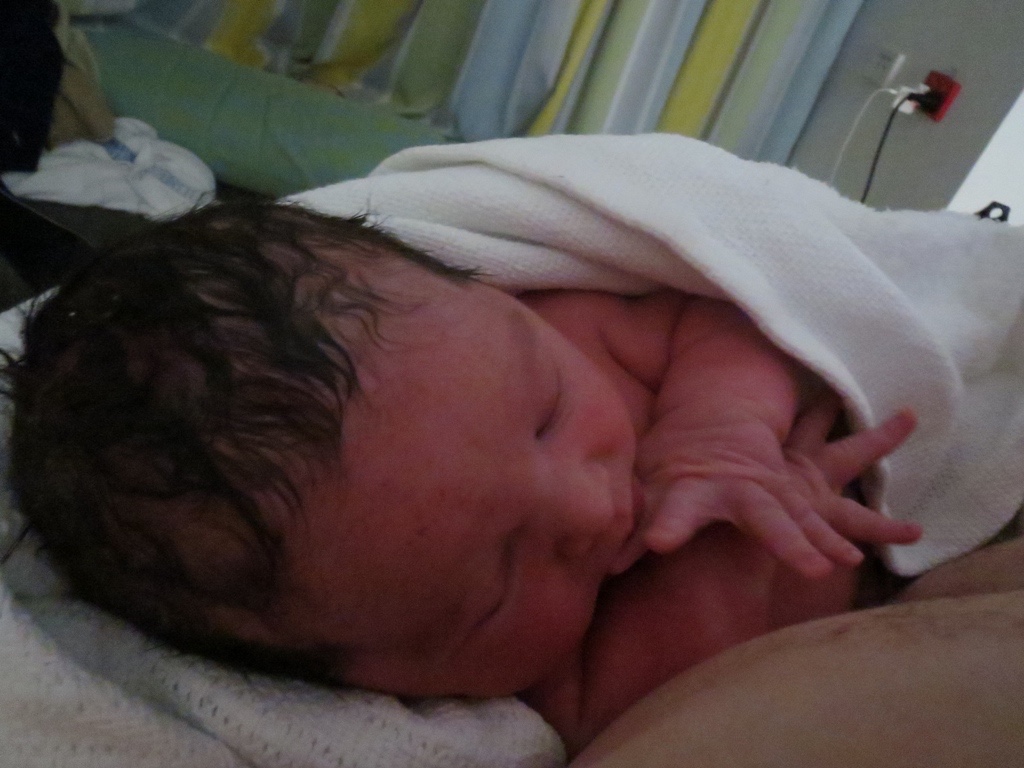
If you want to know what God looks like, that’s pretty similar to one part of it.




